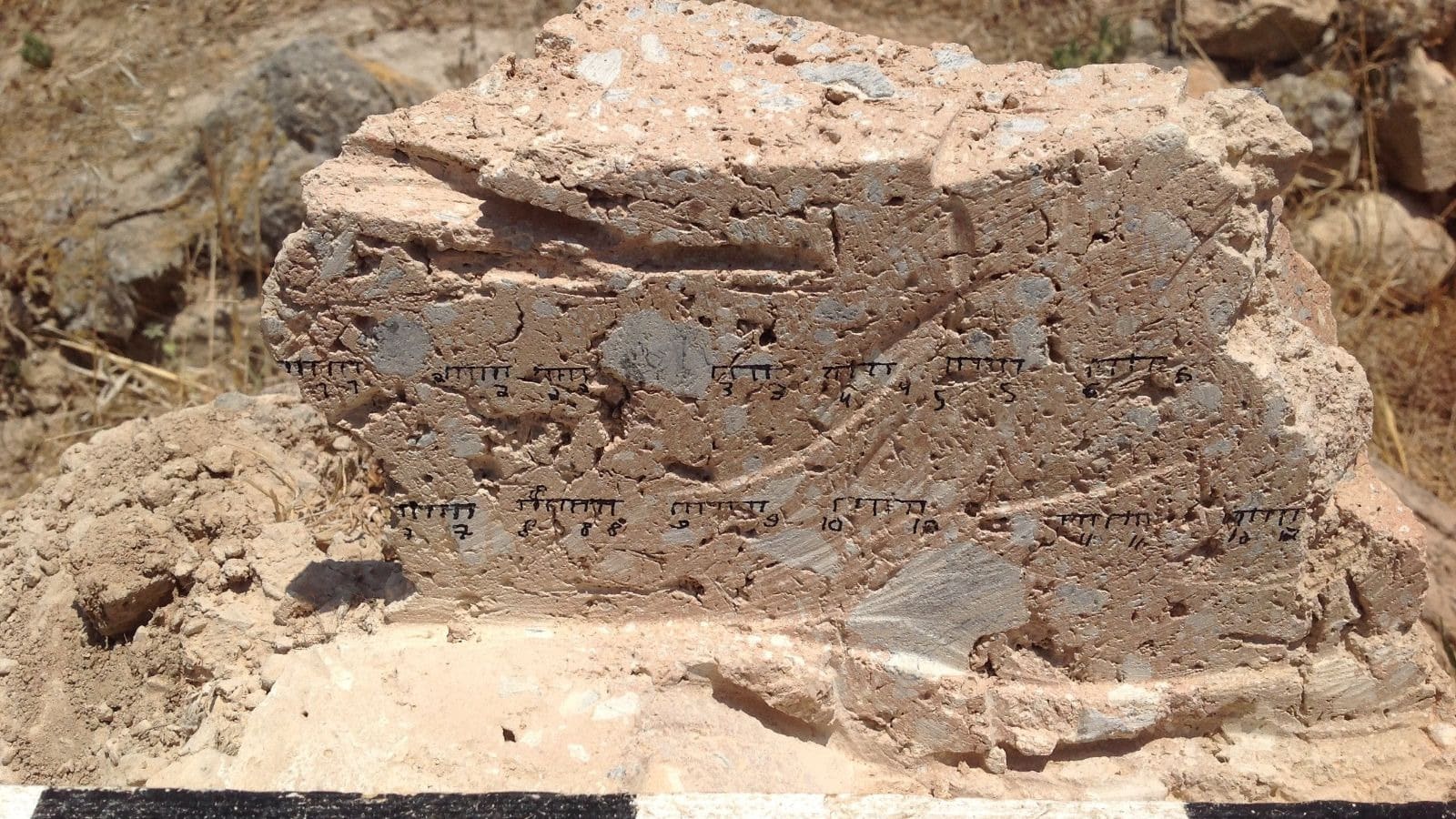
A new technology that detects ancient magnetic fields in baked bricks has confirmed an event described in the Old Testament of the Bible: the destruction of the Philistine city of Gath.
The study was published October 9, 2023 in the journal One plus, But Tel Aviv University did not release it until January 4, 2024. The investigation was conducted by researchers from Tel Aviv and three other universities: the Hebrew University of Jerusalem, Bar-Ilan University, and Ariel University.
Ancient Gath, currently Tell el-Safi (or Tell el-Safi), was conquered, according to the Bible, by Hazael, king of Aram. “Our findings are important for determining the severity of the fire and the extent of destruction in Gath – the largest and most powerful city in the region at the time – and also for understanding building practices in the region,” say the researchers.
This discovery is linked to the biblical story that says: “Then Hazael king of Aram went up and attacked Gath and took it. Then he decided to attack Jerusalem” (2 Kings 12:17).
According to the researchers, unlike previous methods, the new technology can determine whether a particular item (such as a clay brick) has been burned, even at relatively low temperatures, starting at 200 degrees Celsius.
“During the Bronze and Iron Ages, the main building material in most of the Land of Israel was mud brick,” explains Oded Lipshitz, a collaborating researcher at the Sonia and Marco Nadler Institute of Archaeology at Tel Aviv University, in a statement. . “This cheap and readily available material was used to construct walls in most buildings, sometimes on stone foundations.”
The study measured the magnetic field recorded in the bricks as they burned and cooled. “The clay from which the bricks are made contains millions of ferromagnetic particles – minerals with magnetic properties that behave like many ‘compasses’ or small magnets,” says Yoav Vaknin, the research leader.
As the scientist explains, in sun-dried clay bricks, the orientation of these magnets is almost random, canceling each other out. When heated to 200°C or more, as happens in a fire, magnetic signals are released from the magnetic particles. “Statistically, they tend to align with the Earth's magnetic field at that particular time and place,” Vaknin says.
Magnetic measurements
The researchers gradually “erase” the brick's magnetic field through thermal degaussing, in which the object is heated in a special oven in an old magnetic laboratory that neutralizes the Earth's field.
The heat triggers magnetic signals, which again organize themselves randomly, canceling each other out. As a result, the overall magnetic signal becomes weak and loses its direction.
/i.s3.glbimg.com/v1/AUTH_fde5cd494fb04473a83fa5fd57ad4542/internal_photos/bs/2024/A/o/oH2Y3FSwSZNnQRiAdR4g/low-res-3.-dr.-yoav-vaknin.jpeg)
Vaknin explains that the sample was heated to 100 degrees Celsius, which resulted in the signals being released from only a small percentage of the magnetic minerals. The bricks were then cooled and the residual magnetic signal was measured. The scientists then repeated the process at 150°C, 200°C, and so on up to 700°C.
“In this way, the brick's magnetic field is gradually erased,” says Vaknin. The temperature at which each metal's signal is “unlocked” is approximately the same period for which it was initially “locked”; Eventually, the temperature was reached at which the magnetic field was completely extinguished during the original fire.
After testing the validity of the method, the researchers applied it to samples of a brick wall discovered in Tell Safi. The magnetic fields of all the fallen bricks and debris showed the same direction: north and down, indicating that the structure burned in place.
“Our findings mean that the bricks burned and cooled On site, Exactly where they were found. In other words, in a fire in the structure itself, which collapsed within a few hours,” says Vaknin. “If the bricks were fired in a kiln and then placed in a wall, their magnetic directions would be random.”
These random trends, according to the researcher, would also exist if the structure collapsed gradually over time. But the method revealed that the wall and debris burned in a single fire.
“Our method allowed us to determine that all types of bricks, both in the wall and in the debris, were burned during the fire: those located at the bottom burned at relatively low temperatures, and those that were found in the upper layers or fell from above – at degrees Temperature higher than 600°C.
Credits: Galileo Magazine.

“Web geek. Wannabe thinker. Reader. Freelance travel evangelist. Pop culture aficionado. Certified music scholar.”






